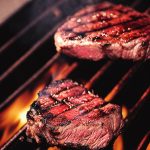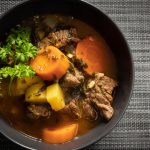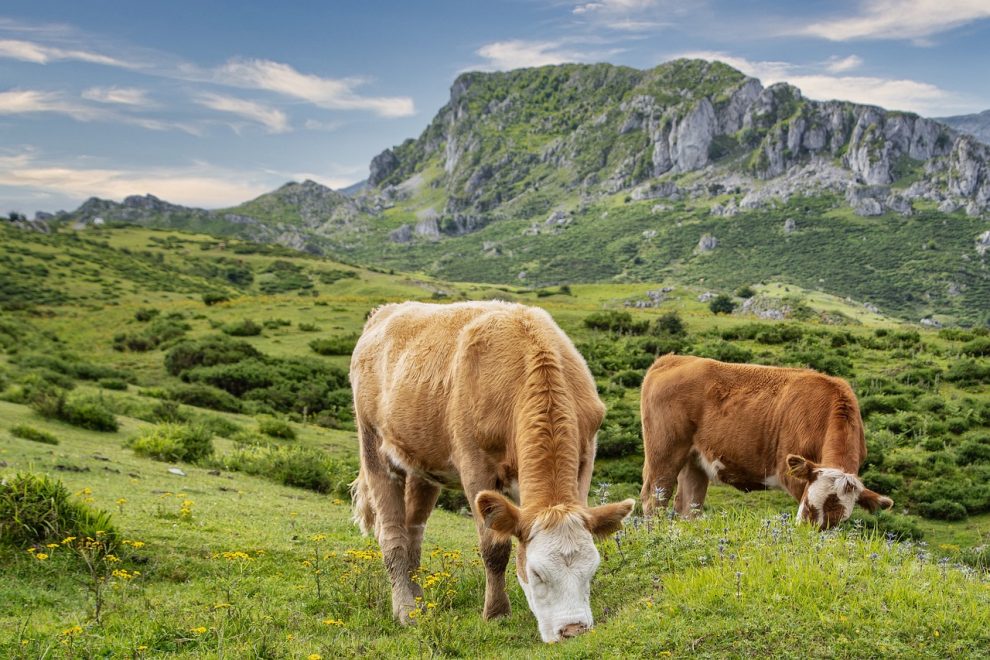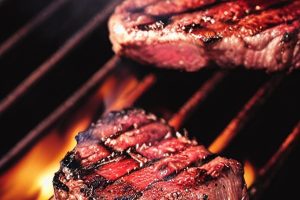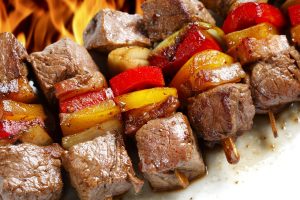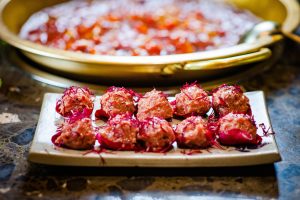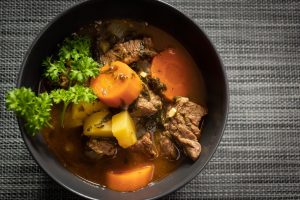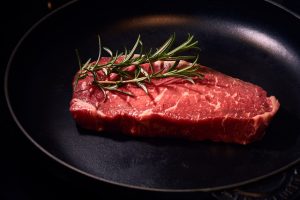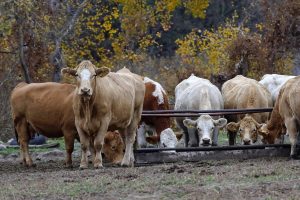Unveiling the Authentic Flavors of Mushu Beef: A Journey into Traditional Ingredients
Mushu beef, a beloved dish in Chinese cuisine, is often misunderstood due to its Westernized versions that are commonly found in restaurants. However, to truly appreciate the authentic flavors of mushu beef, one must embark on a journey into the traditional ingredients that make this dish so special. In this article, we will delve into the origins of mushu beef and explore the key elements that contribute to its unique taste.
Mushu beef traces its roots back to Northern China, where it originated during the Ming Dynasty. This dish was traditionally prepared as a special treat for imperial families and was renowned for its exquisite taste and presentation. Over time, it became a favorite among commoners as well and eventually spread throughout the country.
The key ingredient that sets mushu beef apart is the tender and succulent beef slices. In the traditional recipe, the meat is thinly sliced and marinated in a mixture of soy sauce, rice wine, and various spices. This marination process not only enhances the flavor of the beef but also helps to tenderize it, resulting in a melt-in-your-mouth texture.
Another essential component of mushu beef is the selection of vegetables. Typically, Chinese cabbage, wood ear mushrooms, and bamboo shoots are used to add a refreshing and crunchy texture to the dish. These vegetables are thinly sliced and stir-fried with garlic and ginger to bring out their natural flavors.
To further elevate the taste of mushu beef, a combination of seasonings is added during the cooking process. Hoisin sauce, a thick and sweet condiment made from soybeans, garlic, and spices, is a crucial element that gives the dish its distinctive savory flavor. Additionally, a touch of oyster sauce, soy sauce, and sesame oil are incorporated to enhance the overall umami taste.
The final step in preparing mushu beef involves wrapping the flavorful mixture in thin, delicate pancakes. These pancakes are made from a simple mixture of flour, water, and a pinch of salt. They are then cooked on a hot griddle until lightly browned and slightly crispy. The pancakes act as a vessel to hold the beef and vegetable filling, adding a delightful texture contrast to each bite.
In conclusion, to truly experience the authentic flavors of mushu beef, it is essential to understand the traditional ingredients that make this dish so special. The tender beef slices, fresh vegetables, and carefully selected seasonings all contribute to the unique taste that has captivated Chinese palates for centuries. By embracing the traditional approach to preparing mushu beef, one can uncover the true essence of this beloved Chinese delicacy. So, the next time you have the opportunity to try mushu beef, savor each bite and appreciate the rich history and flavors that it embodies.
The Essential Ingredients of Mushu Beef: A Closer Look at the Traditional Recipe
Mushu beef is a classic Chinese dish that combines tender strips of beef with a medley of fresh vegetables, all wrapped in a thin pancake. The dish is known for its bold flavors and unique presentation, making it a popular choice among both locals and tourists.
To truly understand the essence of mushu beef, it is important to examine the key ingredients that contribute to its distinctive taste. Here are the essential components of this traditional recipe:
- Beef: The star of the dish, beef is typically thinly sliced and marinated to infuse it with flavor. The best cuts for mushu beef include flank steak or sirloin, as they are tender and can withstand the high heat of stir-frying.
- Mushrooms: Mushrooms add an earthy flavor and a meaty texture to the dish. Shiitake mushrooms are commonly used in traditional recipes, but other varieties such as cremini or button mushrooms can also be used.
- Vegetables: Mushu beef is traditionally prepared with a mix of vegetables, including cabbage, carrots, and bamboo shoots. These vegetables not only provide a refreshing crunch but also add a vibrant color to the dish. Other vegetables like bell peppers or snow peas can also be incorporated for added variety.
- Hoisin sauce: A key component of the sauce, hoisin sauce is a thick, sweet, and tangy condiment made from soybeans, garlic, vinegar, and various spices. It adds depth and richness to the dish, complementing the flavors of the beef and vegetables.
- Pancakes: The final touch to mushu beef is the thin, delicate pancakes that serve as the wrapping for the filling. These pancakes are made from flour, water, and a touch of oil, resulting in a light and slightly chewy texture. They are typically warmed before serving to make them pliable.
The traditional recipe for mushu beef involves a careful balance of flavors and textures. The beef is first marinated, then stir-fried with the vegetables and mushrooms in a hot wok. The hoisin sauce is added, coating everything with its distinctive taste. Finally, the filling is spooned onto the warmed pancakes, rolled up, and enjoyed immediately to savor the combination of flavors.
In conclusion, mushu beef is a beloved Chinese dish that showcases the harmonious blend of beef, vegetables, and hoisin sauce. Its traditional recipe requires attention to detail and precise cooking techniques to create a flavorful and visually appealing dish. Whether enjoyed at a fine dining restaurant or prepared at home, mushu beef is a culinary delight that offers a taste of Chinese cuisine at its best.
Exploring the Rich Culinary Heritage of Mushu Beef: Traditional Ingredients and their Significance
Mushu beef is a dish that originates from northern China and has a rich culinary heritage. The dish is known for its bold flavors and unique cooking method, which involves stir-frying thinly sliced beef with a variety of traditional ingredients. Understanding the traditional ingredients used in mushu beef is key to appreciating its cultural significance and the flavors it brings to the table.
One of the primary ingredients in mushu beef is the beef itself. The beef used in this dish is typically flank steak or sirloin, which are both lean cuts of meat. These cuts are favored because they are tender and easily absorb the flavors of the other ingredients in the dish. The beef is thinly sliced to ensure quick and even cooking.
Another key ingredient in mushu beef is the mushrooms. Traditionally, Chinese black mushrooms, also known as shiitake mushrooms, are used. These mushrooms have a meaty texture and a distinct earthy flavor that complements the beef. The mushrooms are usually sliced or diced and added to the stir-fry, adding depth and complexity to the dish.
In addition to mushrooms, mushu beef often includes bamboo shoots. These shoots are known for their crisp texture and subtle flavor. They add a refreshing element to the dish and provide a contrast to the richness of the beef and mushrooms. The bamboo shoots are typically sliced thinly and stir-fried along with the other ingredients.
Another important ingredient in mushu beef is the scallions. Scallions, also known as green onions or spring onions, are widely used in Chinese cuisine for their mild, onion-like flavor. They add a fresh, aromatic element to the dish and enhance its overall taste. The scallions are usually chopped and added towards the end of the stir-frying process to preserve their vibrant green color and crisp texture.
To bring all the flavors together, mushu beef is typically seasoned with a combination of soy sauce, hoisin sauce, and oyster sauce. These sauces add a savory, umami taste to the dish and create a rich, glossy coating on the ingredients. The sauces also help to bind the flavors together and create a harmonious balance.
In conclusion, exploring the rich culinary heritage of mushu beef allows us to appreciate the traditional ingredients and their significance in creating this flavorful dish. From the tender beef to the earthy mushrooms, crisp bamboo shoots, aromatic scallions, and flavorful sauces, each component plays a crucial role in bringing out the best in mushu beef. Understanding the traditional ingredients and their significance adds depth to our culinary knowledge and allows us to truly savor the cultural heritage that this dish represents.
From Hoisin Sauce to Shiitake Mushrooms: Traditional Ingredients that Make Mushu Beef Irresistible
Mushu beef is a traditional Chinese dish that has gained popularity worldwide for its delicious flavors and unique preparation. Central to its irresistible taste are the traditional ingredients used, such as hoisin sauce and shiitake mushrooms. In this article, we will explore the significance of these ingredients and how they contribute to the overall appeal of mushu beef.
Hoisin sauce is a key component in many Chinese dishes, and it plays a vital role in enhancing the flavor of mushu beef. Made from a blend of soybeans, garlic, vinegar, and various spices, hoisin sauce adds a rich, sweet, and savory taste to the dish. Its thick consistency helps to coat the meat and vegetables, ensuring every bite is packed with flavor.
The inclusion of shiitake mushrooms in mushu beef further elevates its taste profile. These mushrooms are widely known for their earthy, umami flavor, which adds depth to the dish. Shiitake mushrooms also have a meaty texture, making them a perfect complement to the tender strips of beef commonly used in mushu beef. Their unique taste and texture provide a satisfying contrast to the other ingredients, creating a harmonious combination of flavors.
In addition to hoisin sauce and shiitake mushrooms, other traditional ingredients that make mushu beef irresistible include bamboo shoots, scallions, and garlic. Bamboo shoots add a delightful crunchiness to the dish, while scallions and garlic contribute their distinct aromas and flavors. Together, these ingredients create a symphony of tastes and textures that make mushu beef a truly memorable culinary experience.
The preparation of mushu beef involves stir-frying the ingredients over high heat, allowing them to quickly cook while retaining their individual flavors. The marriage of the hoisin sauce, shiitake mushrooms, and other ingredients creates a mouthwatering sauce that coats the beef and vegetables, resulting in a delectable dish that is both comforting and satisfying.
In conclusion, the traditional ingredients used in mushu beef, such as hoisin sauce and shiitake mushrooms, play a crucial role in its irresistible taste. The combination of flavors and textures derived from these ingredients creates a harmonious and memorable dining experience. Whether you are a fan of Chinese cuisine or simply looking to explore new flavors, mushu beef is a dish that should not be missed.
Traditional Ingredients that Elevate Mushu Beef to a Culinary Delight: A Glimpse into the Recipe’s Authenticity
Mushu beef is a classic Chinese dish that has become a favorite in many parts of the world. Known for its savory and aromatic flavors, this dish combines tender strips of beef with a variety of vegetables and traditional seasonings. The key to achieving an authentic and delightful mushu beef lies in the use of traditional ingredients that enhance its rich flavors.
One of the essential components of mushu beef is the sauce that coats the beef and vegetables. Traditional recipes call for the use of hoisin sauce, a thick and sweet condiment made from fermented soybeans, garlic, vinegar, and various spices. This sauce adds a deep umami flavor to the dish, balancing the richness of the beef and complementing the crispness of the vegetables.
Another crucial ingredient in mushu beef is oyster sauce. Made from oysters that have been boiled and simmered, this sauce adds a unique depth of flavor to the dish. Its slightly sweet and savory taste enhances the natural flavors of the beef and vegetables, creating a harmonious blend of tastes that will leave your taste buds satisfied.
To give mushu beef its signature smoky flavor, Chinese dried mushrooms are commonly used. These mushrooms are soaked in hot water to rehydrate them before being added to the dish. Their earthy and woody aroma infuses the beef and vegetables, elevating the overall taste profile of the dish.
In addition to the sauce and mushrooms, other traditional ingredients that contribute to the authenticity of mushu beef include bamboo shoots and wood ear mushrooms. Bamboo shoots add a crisp texture and a slightly sweet taste to the dish, while wood ear mushrooms provide a chewy and gelatinous texture, as well as a subtle earthy flavor.
To further enhance the flavors, traditional recipes often call for the use of Shaoxing rice wine. This aromatic wine adds a delicate sweetness and depth to the dish, enhancing the overall taste experience.
Finally, the use of sesame oil is essential in bringing out the flavors of mushu beef. Just a small drizzle of this fragrant oil can elevate the dish, adding a nutty and toasty note that complements the other ingredients.
In conclusion, the authenticity and culinary delight of mushu beef lie in the traditional ingredients used. From the rich and savory hoisin sauce to the smoky dried mushrooms and the aromatic Shaoxing rice wine, each component contributes to the dish’s unique flavors. By using these traditional ingredients, you can recreate the authentic taste of mushu beef and savor its delightful flavors.
